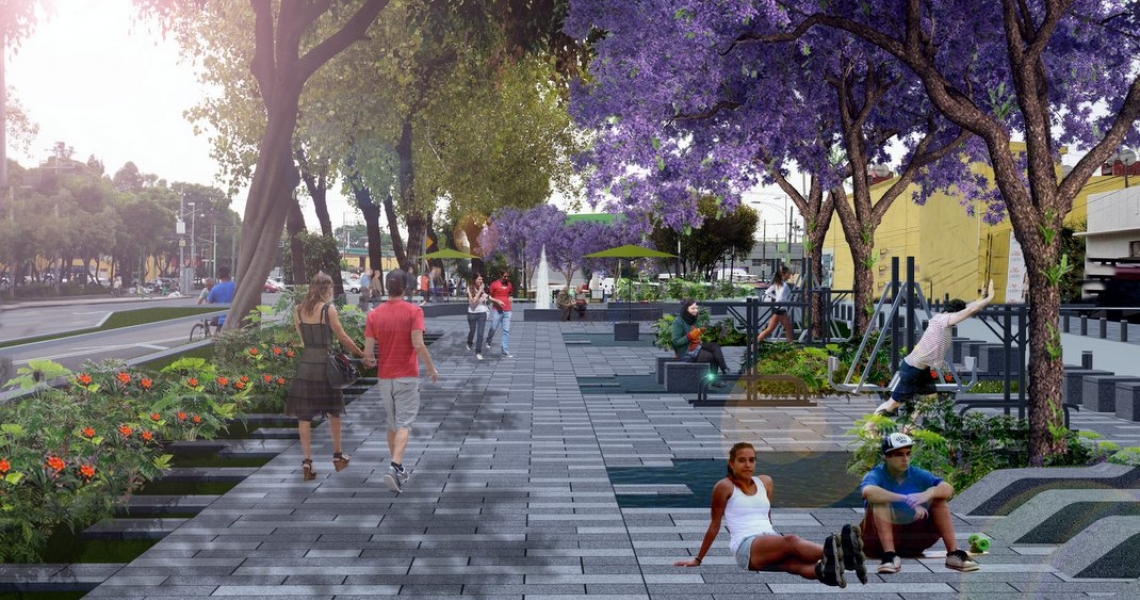Redesigning the Public Sphere
MAUD ’14. Víctor Manuel Rico Espínola, MAUD ’14.
Mexico City is often portrayed as a kind of self-organizing chaos. Nonetheless, it follows a logic of its own. After the Spanish conquest of the Aztec empire in 1521, insistence to consolidate the new capital in the middle of a marshy island, and a continuous battle against floods, led decision makers of the time to drain an entire lake to the ocean. In that sense, Mexico City confronted its own geography in a way very few cities have. Not only has the city’s form been the result of political intention, it has also been shaped by both material forces and didactic visions. Above all, it is the result of multiple colliding cultures. A city that emerges from a constant interaction between contradictory ideas and particular spatial conditions; social conflict and economic disparities.
It is in such a complex arena, that the Public Space Authority or AEP – its achronym in Spanish – was conceived as a strategic area of Mexico City’s government in 2009, devoted to plan, design and implement high quality public spaces, in accordance to long term sectoral plans. It is a highly specialized urban design office within the Secretary of Urban Development and Housing (SEDUVI), that conceives human-centered and high quality design, as a powerful tool for social and economic transformation. A way in which the city commits to the cultivation of a strong, social agency, vis a vis urban vulnerabilities and even climate change.
I’ve been working in this office for a year and a half now as Director of Special Projects. After graduating in May 2014, I couldn’t have thought of a better place to land. AEP lies at the very intersection of planning and design.
Read more about the innovative work of the Public Space Authority in this latest post from Citiscope.





